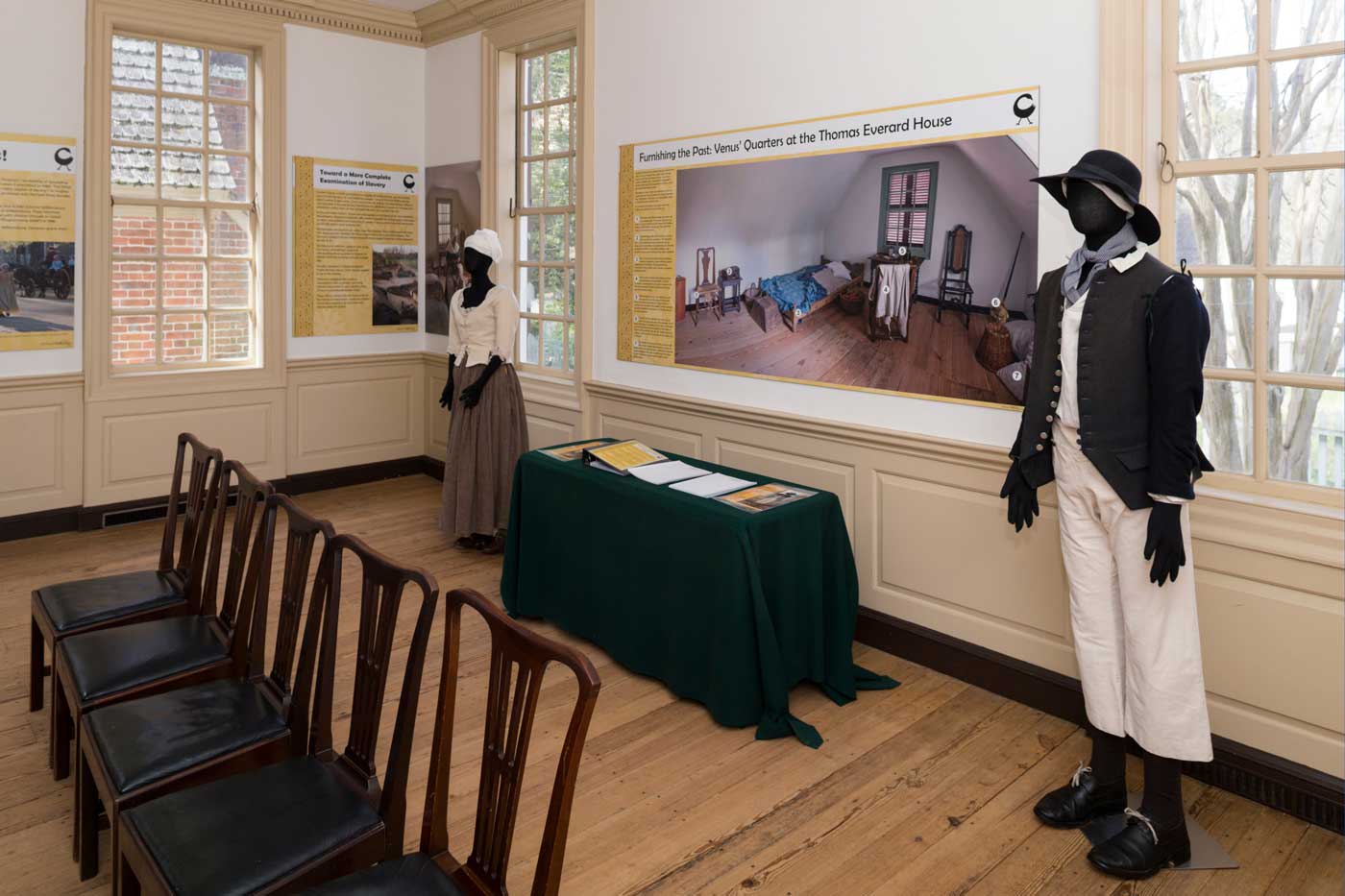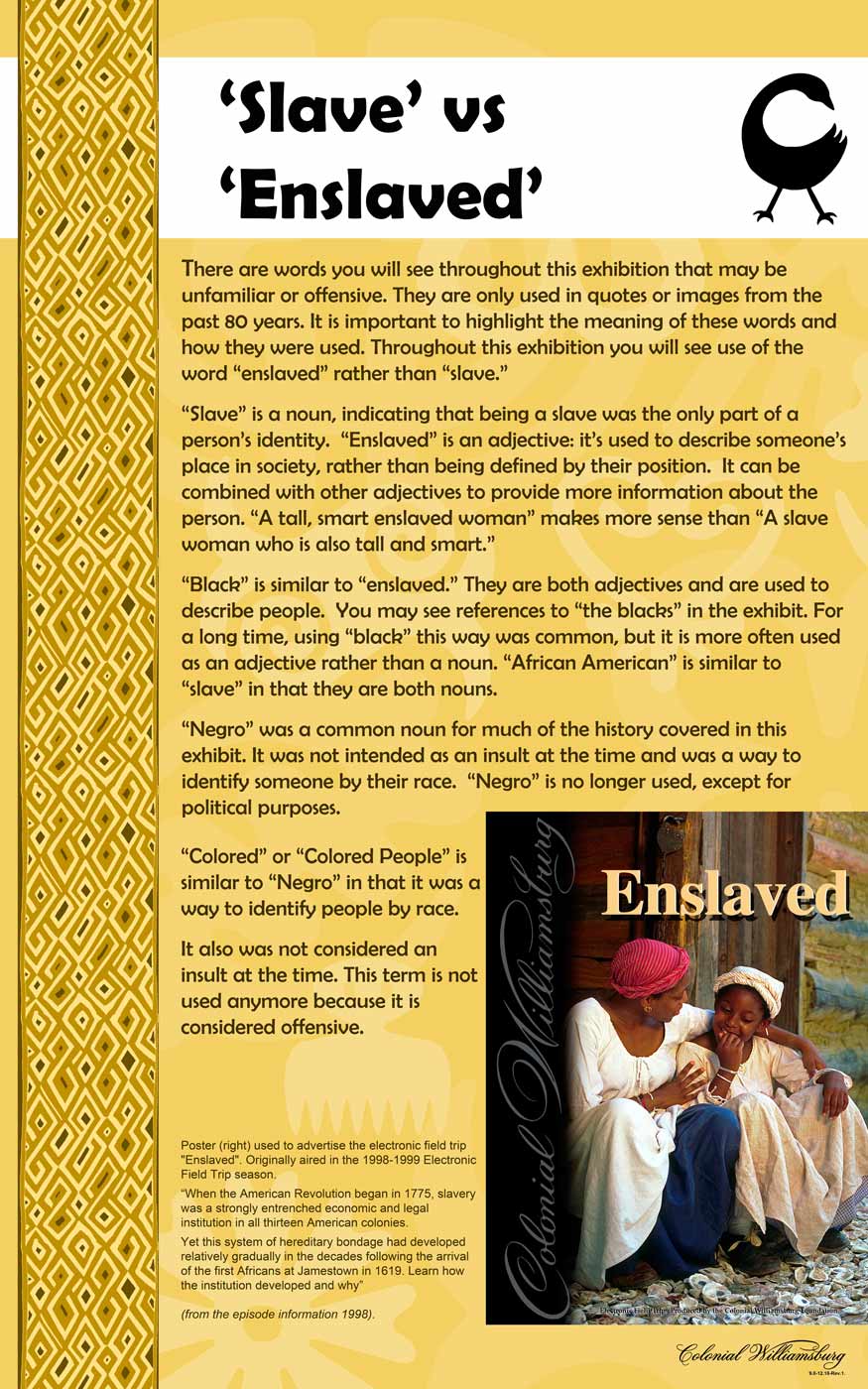It was a sticky July day when I was called to my boss’ office, and a wave of fear and self-doubt washed over me. I had been working as a historian for 3 weeks. What could I possibly have done wrong in such a short time? My mind raced as I climbed the treacherous stairs to his workspace. I sat down, trying to hide the tremor in my hands. “I have an assignment for you,” he said as he slid a manila folder across his desk. I started to sweat. It had nothing to do with the heat.
It turned out that I had nothing to fear; if anything, I was elated. Researching the forty years of African American interpretation at Colonial Williamsburg for a year-long exhibit? Yes, please! I had finished my PhD four years prior and have participated in research projects since, but my background was in 18th-,19th-and early 20th centuries. Note the emphasis on early; 1979 (the first year of African American interpretation) was a foreign land, both historically and personally. This assignment proved to be like no other I’ve ever done.
When people think of historians, they conjure up images of nerds sitting in libraries, and that was exactly what I did. But this nerd got to see part of the library she hadn’t before. Colonial Williamsburg’s John D. Rockefeller Library is also home to CWF’s corporate archives containing documents produced by the Foundation from the 1920s through today (Not to be confused with the library’s Special Collections, which has early American documents). The archivists brought me a box of the most significant writings for my project. Sifting through the material was both odd and exhilarating: images of people who still do this work today, oral histories from those still remembered, and memos from those whose contributions are beyond memory.

Tracking down my next set of sources was more fun (sorry corporate archives). I wandered the Historic Area, poking my nose into the breakrooms and the hidden closets of our historic buildings, looking for sources to reconstruct the work of the pioneers in the field.
Of everything I found in the musty back rooms, two documents illustrated CW’s commitment to telling the story of free and enslaved Virginians. Carter’s Grove was an 18th-cenutry plantation just outside of Williamsburg used as a CW exhibition site from the mid-1970s until 2003. Like all of our historic sites, it had training manuals that were updated every few years. In my rummaging, I found two of Carter’s Grove’s, one from 1976 and one from 1988. And what a difference those 12 years made!
The pre-1979 manual barely mentioned slavery – there was only one explicit reference to “Servants and Slaves” in the outline of interpretation. Slavery was to be interpreted in one place – the plantation office. The interpreters only discussed slave owners and their trials managing the enslaved population, but made no mention of the hundreds of people who fed, clothed, and served their owners.
The 1988 manual, produced nine years after CW’s initial commitment to African American interpretation, is a very different document. African American programming flourished between ’79 and ’88, carving a narrative that touched all parts of the Foundation. Using money from big-time grants (AT&T and IBM anyone?) Carter’s Grove became the site of historically accurate constructed quarters, new approaches to interpretation, and a team devoted to telling the stories of the “forgotten.” The 1988 manual grappled with the big issues like black-white relations, the development of African American cultures, and daily life within the slave system, among others.
The 12 years between the two manuals marked the beginning of something wonderful. It has grown and expanded in ways that no mere historian can study or quantify. The work of countless interpreters, curators, architectural historians, actors, archeologists, and — yes — historians is reflected in every “ah-ha” moment a guest has about the enslaved.
It’s evident in powerful museum theater scenes.
It peeks around corners in exhibition spaces.
Most of all, it inspires new generations of museum professionals to recommit to the promise CW made in 1979.

The special exhibition “Revealing the Priceless: 40 Years of African American Interpretation,” debuted in the Raleigh Tavern’s Daphne and Billiards rooms in early 2019. Guests filled two guest books through Feb. 29, 2020. The exhibition is being relocated to the Colonial Williamsburg Regional Visitor Center.
Dr. Kelly Brennan Arehart has been a CW historian since 2018. While working on her doctorate at William and Mary, she wore many hats at the Foundation, including giving tours in costume and working for Teacher Institute. She can also be found on the streets of Williamsburg as storyteller for Haunted Williamsburg.
Resources
William T. Cole, “Carter’s Gove Information, (unpublished report, Colonial Williamsburg Foundation, 1976), iii.
“Carter’s Grove Slave Quarter Interpretive Plan,” (unpublished report, Colonial Williamsburg foundation, 1988), 1.